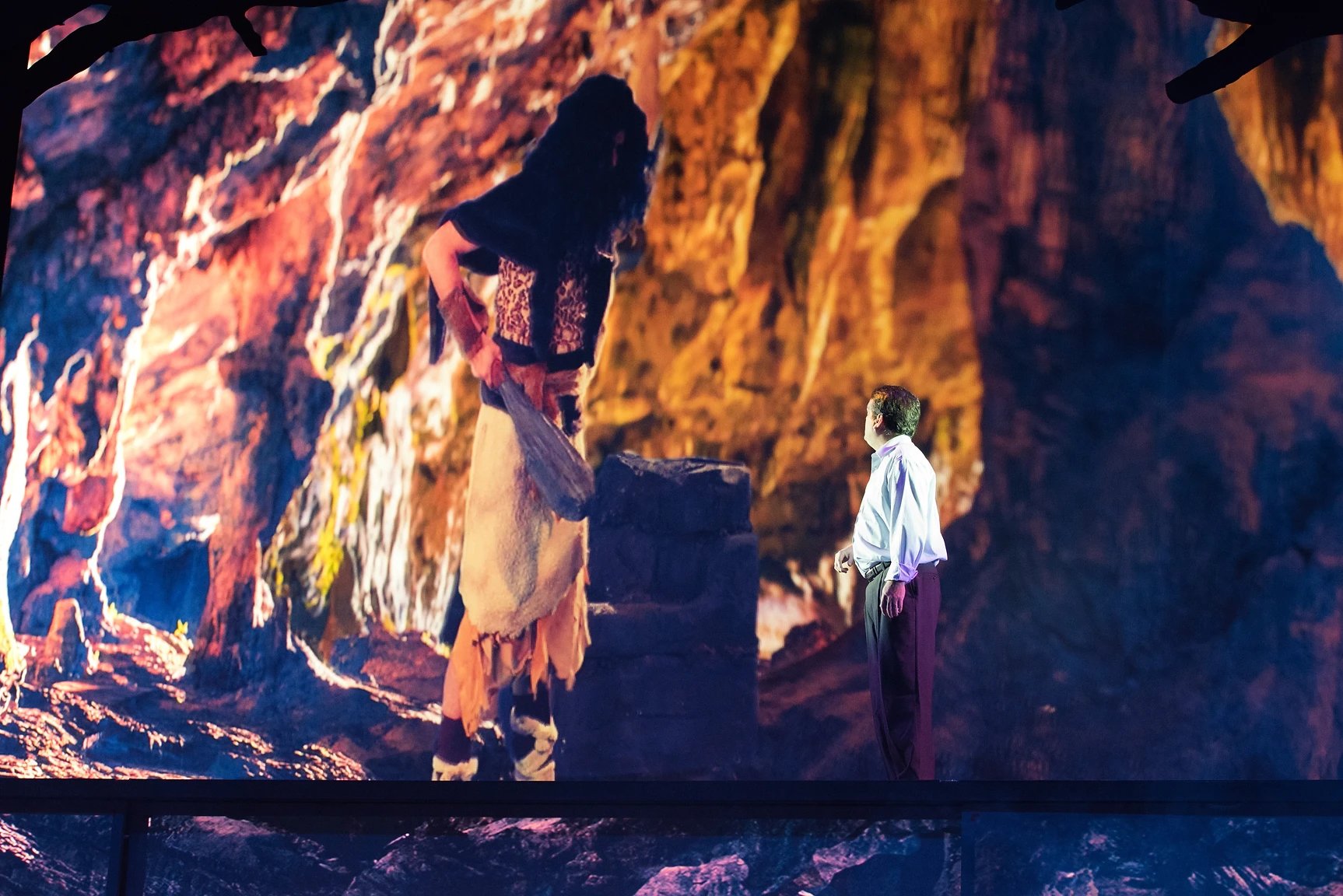Big Fish
Brigham Young University - Idaho (2017)
Animator, Sound Designer, & Projection System Designer
With a production consisting of so many unique locations, we knew early on that we simply wouldn’t have the space to store the needed amount of backdrops. With our interest in projections still piqued after mounting Singin’ In The Rain at The Playmill Theatre, we decided on utilizing a large projection system comprised of five projectors running from three separate computers that were all networked together.
It took a team of animators and a lot of creative thinking to make this design work. Images were composited and created specifically for this production to match the vision of the director. These static images were then given subtle animation to breathe life into the design. After months of worrying it wouldn’t happen, I can say that the final result looked absolutely breathtaking.
Karl the Giant
An early concern was how we should accomplish putting a giant on stage. A common solution in other productions was to use stilts, though we were concerned for the actor’s safety. The actor they had cast to play Karl was already well over 6 feet. We decided to record Karl’s scenes and play them back while on stage. After filming him on a green screen, we used some clever After Effects and QLab tricks to get him to play back as seamlessly as possible. Since we needed Karl to have an actual conversation on stage with Edward Bloom, the dynamic design was crucial- and a success.
After our decision to make him completely animated, I met with the actor portraying the giant to learn a little more about his voice. I found that asking him to speak in his upper registry, then lowering his voice a major third gave me the exact result I was looking for. Here’s the thing… he sings. To remedy this, we would raise his sections of the songs a major third when recording his parts, then I lowered them back again.
After we filmed his sequences on a green screen, we ventured to the studio to record his ADR. While sitting with the director, we recorded a large number of takes, giving him notes in between each of them, to achieve the desired result.
The end of the show called for the actor playing the giant to be present on stage in a moment that’s supposed to merge the two realities of the show together. We needed to have him speak like the animated giant on stage. The pitch-bending functionality on our DigiCo SD9 was surprisingly limited, so I opted to feed his microphone to QLab on a Mac which handled the voice processing and fed it back to the board. The effect was convincing and sounded just like his recordings.
Fireworks
Big Fish featured a large USO production number at the beginning of the second act. Because I love to run my mouth and suggest things, I was tasked with designing sounds for a fireworks display, as well as creating animated fireworks for the sequence. Luckily our director had quite the obsession with fireworks, so I ventured out in the cold winter to his home to test out my new field recorder. After about an hour of sampling various fireworks, I had what I needed.
The interesting thing about this design, which I’ve run into on other projects, as well, was that most of my design needed to be synchronized with the projections. At times it can feel as though I’m designing sound for film more than live theatre, although the payoff can be complex sound sequences with great visuals, and I’ll take that any day. Here is the final result, animation, and all.
The Showdown
A scene in the latter segment of the show gives us an uncomfortable look at Edward Bloom as he spirls into a state of defensive apprehension. After a fight with his son, we dive with him into a medicine-driven nightmare, where his son continues to put his intentions on trial. The transition into this is a tough sell, so we knew we’d need a device to help lead the way. During our paper tech meeting, the director and I had an idea of what could go here, just days before opening the show.
I picked certain lines of Edward and his son from various parts of the show that could come together to create an overall narrative for the sequence. This would all overlay a piece of music coming from a documentary Edward is watching on TV as he slips into unconsciousness. The music provided to us for this scene was less than admirable, so I reorchestrated the existing music and then laid some different effects over it to fit the overall feel of the sequence. I’m incredibly proud of this sequence.



















